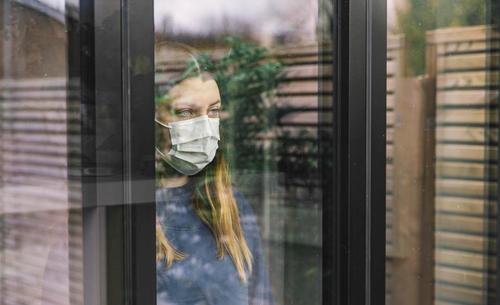US Suffers Explosion In Urgent Mental-Health Cases As COVID Recedes
The latest indication that the COVID-19 pandemic (and the heavy-handed lockdowns imposed in the US and elsewhere) is leading to a relatively quiet, but still severe, mental health crisis appeared in Monday’s Wall Street Journal via a report about the surge in urgent mental-health-related cases clogging up emergency rooms and psychiatric hospitals around the country.
And as the US increasingly moves to reopen, the whiff of newfound freedom is apparently pushing more people over the edge.
WSJ begins its story at Pittsburgh’s largest psychiatric hospital, where one doctor working the overnight shift has seen the average number of daily cases double to nearly two dozen from nearly a dozen.
“It seems like everyone has been holding their breath for a year, and now, it’s just a total explosion of everything, both in terms of high volume but also the severity of cases,” Dr. Sparks said. “You see a lot more people who were, pre-pandemic, kind of overwhelmed and stressed, and now they have full-on anxiety disorders or depression.”
The wave of mental-health cases has “grown into a tsunami”, flooding an already overtaxed health-care system. Emergency departments say they are being overwhelmed by patients who either deferred care, or simply couldn’t access it, during the pandemic, or whose symptoms were exacerbated or aggravated by the lockdowns.
Some doctors fear this is only the beginning, and that the full impact of the pandemic on mental health won’t be ascertainable for years. Here’s a breakdown of some of the other key information from the WSJ story:
- Children have been hit particularly hard. School closures have led to serious mental-health issues going unnoticed because teachers and school psychologists are a primary source of referrals. Even before the pandemic, the country faced a shortage of mental-health professionals serving juveniles: the American Academy of Pediatrics last year estimated the need for child psychiatrists at 47/100K people, roughly 4x the number in practice. Emergency-room visits for mental-health crises among 12- to 17-year-olds increased 31% between 2019 and 2020 according to the CDC. At the University of Pittsburgh Medical Center, pediatric-outpatient volume surged 30% in the first four months of 2021 compared with the year earlier. “We have more kids waiting for care than we ever have before,” said Abigail Schlesinger, the hospital’s chief of child and adolescent psychiatry. “We’re in the mental-health emergency phase of this pandemic.”
- Suicides have risen among minors. Emergency-room visits for suspected suicide among kids 12-17 rose 22% last summer compared with the previous year, and 39% this past winter compared with the previous winter.
- More mental-health crises are ending up in emergency rooms in part because outpatient facilities, including private psychiatrists’ offices, therapy practices and crisis centers, are simply overwhelmed. “For us, it’s definitely a lot of people who either had pre-existing conditions or have neglected to address their new onset of emotional imbalance,” said Damir Huremovic, a psychiatrist at North Shore University Hospital on Long Island. “Many developed anxiety or insomnia, and they tried to see a provider but no one was taking new patients, and then things sort of just snowballed.”
- Crisis hotlines are bumping. Overall volume at Resolve, a crisis hotline serving an impoverished slice of Pittsburgh, saw rates of calls between January and April surge 27% compared with the year-earlier period. For the past six months, Resolve has been handling hundreds of phone calls a day, with as many as 50 of them serious enough to require a home visit by trained clinicians. That’s 2x to 3x the level from two years ago. “Isolation is the overarching theme,” said Jeff McFadden, a phone crisis clinician at the center who says the volume of calls is the highest he has seen in his 13 years at Resolve. “It’s everything from ‘I’m lonely’ or ‘my girlfriend broke up with me,’ to ‘I’ve got a gun right next to me, give me a reason to live’…There’s this perfect storm where people feel trapped in their own houses and alone. We’re seeing it more and more.”
- Delays in finding care are also a problem. “Clinics that used to be able to get people in within a couple of days, it now takes a couple of weeks or months,” one doctor said. The past year has “broken all the paradigms” for how to treat mental-health cases in the community.
Increasingly, the doctors and nurses who care for patients seeking urgent care for psychiatric issues are feeling job-related stressors like burnout intensify. “You can only take so much when you’re sleep-deprived, exhausted, and juggling other people’s problems like balls on fire for so many nights in a row,” one doctor said.
And another an epidemic of health-care workers taking leave or quitting due to burnout is the last time the health-care system needs.
Tyler Durden
Fri, 07/02/2021 – 19:20
via ZeroHedge News https://ift.tt/2Ug8JnA Tyler Durden
